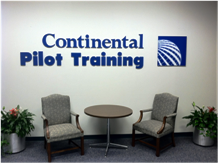 I left off saying that I just began intern pilot training at Continental Airlines. Now three weeks later, I’m writing to say that I’ve successfully completed that course. I learned a lot during training and enjoyed it as well. It was certainly an experience that I will never forget.
I left off saying that I just began intern pilot training at Continental Airlines. Now three weeks later, I’m writing to say that I’ve successfully completed that course. I learned a lot during training and enjoyed it as well. It was certainly an experience that I will never forget.
My first week, as I mentioned earlier, consisted of ground school classes and procedures training in FTDs. Starting there, I was able to learn some skills necessary to operate safely in a multi-crewmember environment.
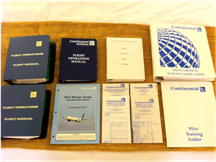 When learning to fly small aircraft, students are taught to fly the airplane by themselves, as many require only one pilot. However, many large transport aircraft require more than one crewmember, in most cases only two. There are many factors as to why more than one crewmember is necessary, but mainly it is to assist with the high workload. There is much more happening in the cockpit of Boeing 737 than in a Cessna 172, as you can imagine.
When learning to fly small aircraft, students are taught to fly the airplane by themselves, as many require only one pilot. However, many large transport aircraft require more than one crewmember, in most cases only two. There are many factors as to why more than one crewmember is necessary, but mainly it is to assist with the high workload. There is much more happening in the cockpit of Boeing 737 than in a Cessna 172, as you can imagine.
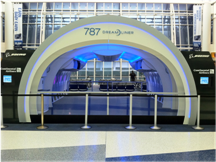 Duties such as Pilot Flying (PF) and Pilot Monitoring (PM) were discussed and practiced during each activity. Many times the monitoring pilot will contact Air Traffic Control (ATC) and retract the gear and flaps on command by the pilot flying, regardless of who is the Captain or First Officer. However, when the monitoring pilot is diagnosing a problem, troubleshooting, or briefing an approach, the pilot flying will take on the extra duties such as ATC.
Duties such as Pilot Flying (PF) and Pilot Monitoring (PM) were discussed and practiced during each activity. Many times the monitoring pilot will contact Air Traffic Control (ATC) and retract the gear and flaps on command by the pilot flying, regardless of who is the Captain or First Officer. However, when the monitoring pilot is diagnosing a problem, troubleshooting, or briefing an approach, the pilot flying will take on the extra duties such as ATC.
 Many of our procedures, or how we operate, come from accident/incident studies and statistics. So before we learn an action, such as how to dialing in the altimeter setting, we study accidents and incidents where pilots failed to properly set it. By learning from the mistakes of those aviators before us, we can better prepare ourselves to not make those same ones. This proves that studying history is very important, even if its aviation history!
Many of our procedures, or how we operate, come from accident/incident studies and statistics. So before we learn an action, such as how to dialing in the altimeter setting, we study accidents and incidents where pilots failed to properly set it. By learning from the mistakes of those aviators before us, we can better prepare ourselves to not make those same ones. This proves that studying history is very important, even if its aviation history!
The remaining last two weeks I spent in a Boeing 737-800 Level D Full-Flight Simulator (FFS). I kept the same partner as I had during the FTD training and similar to that, we rotated Captain and First Officer roles. Each unit, of which there were seven, consisted of a four-hour flight session, with a two-hour briefing before, and a fifteen-minute debrief after. During each ‘sim’, we would each spend two hours in both Captain and First Officer seats. All 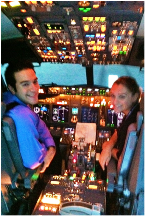 of our flying, for the most part, took place in the right seat, which I didn’t think was all too different. Which means in most of our scenarios, the pilot flying (PF) was the First Officer and pilot monitoring (PM) was Captain. According to our instructor, it takes about 30 seconds to get used to flying in either seat; however it could take years to be upgraded from First Officer to Captain.
of our flying, for the most part, took place in the right seat, which I didn’t think was all too different. Which means in most of our scenarios, the pilot flying (PF) was the First Officer and pilot monitoring (PM) was Captain. According to our instructor, it takes about 30 seconds to get used to flying in either seat; however it could take years to be upgraded from First Officer to Captain.
Tasks we learned and demonstrated in the simulator included (but were not limited to) Low Visibility Takeoffs and Landings, Stalls, Steep Turns, Unusual Attitudes, Engine Failures/Fires, Engine Failures/Fires at V1, Rejected Takeoffs, Go Arounds, Windshear Recovery, Hydraulic Failures, Precision & Non-Precision Approaches, Circling Approaches, Single Engine (Instrume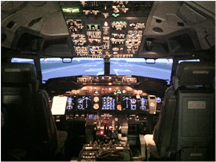 nt and Visual) Approaches & Go Arounds, CFIT Training, as well as normal procedures and various scenario-based training. I felt that my partner and I made good use of our time together in the simulator, as we were able to experience many aspects that were not covered in the syllabus, courtesy of our instructor.
nt and Visual) Approaches & Go Arounds, CFIT Training, as well as normal procedures and various scenario-based training. I felt that my partner and I made good use of our time together in the simulator, as we were able to experience many aspects that were not covered in the syllabus, courtesy of our instructor.
Now I’m currently headed back for a week at the Chief Pilot Office. I will be visiting The Boeing Company in Seattle next week and also will be relocating to Denver, CO for an upcoming company project. Such exciting opportunities! I will write about these in the next entry.
Over and Out.


